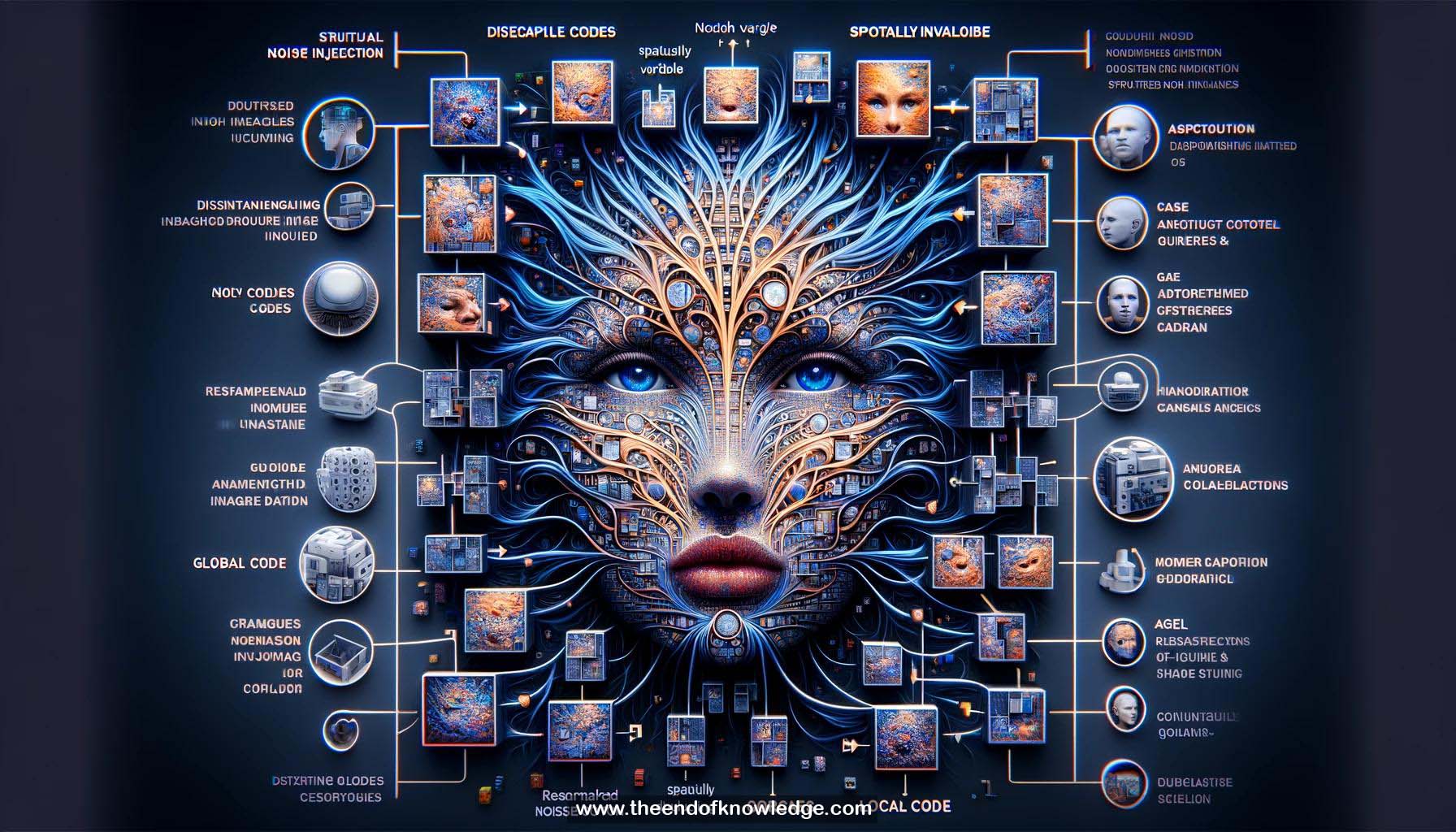 >
>
Concept Graph & Resume using Claude 3 Opus | Chat GPT4o | Llama 3:
Resume:
1.- Disentangled image generation through structured noise injection enables editing of randomly generated images.
2.- Networks generate realistic images but fail at editing.
3.- Goal: Restrict influence of noise code entries to specific image regions, separate global/stylistic details from local details.
4.- Two ways of using input noise codes: direct mapping (DCGAN) and instance normalization parameter computation (style-based generators).
5.- Spatial correspondence exists between input tensor and final image.
6.- Proposed architecture achieves high disentanglement using two input noise codes: spatially variable and spatially invariable.
7.- Spatially variable codes allow resampling of specific image regions.
8.- Spatially invariable code defines most style and color information.
9.- Spatial disentanglement achieved by structuring spatially variable codes with local, shared, and global codes.
10.- Each cell of spatially variable code has unique local code, shared code with neighbors, and shared global code.
11.- Global and shared codes encode information spanning multiple locations (pose, accessories).
12.- Each cell has independent fully connected layer, guaranteeing local code independence after mapping.
13.- Spatially invariable code contains unique local code, leveraged for expressing stylistic information.
14.- Without spatially invariable code, local codes can change background and style in addition to local details.
15.- Method outperforms state-of-the-art StyleGAN in disentanglement scores.
16.- PathLength measures influence of interpolating spatial invariable code.
17.- Linear separability measures inaccuracy of linear attribute classifiers trained on input codes.
18.- Higher PathLength and linear separability scores indicate entangled mapping.
19.- Resampling global part of spatially variable code affects pose while maintaining likeness and background style.
20.- Resampling shared part of spatially variable code affects age, accessories, and face dimensions.
21.- Resampling local codes around mouth changes mouth shape.
22.- Resampling local codes in top rows changes hairstyle.
23.- Resampling spatially invariable codes maintains pose, age, facial expressions, and clothing shape while changing background, ethnicity, and sex.
24.- Future work: separating content and style, offering more control in spatially invariable code, determining suitable decomposition of generation process.
25.- Potential to change ethnicity while maintaining other stylistic aspects of face image.
26.- Disentanglement scores (PathLength and linear separability) used to compare methods.
27.- Spatial correspondence enables targeted editing of generated images.
28.- Architecture structured to achieve independence and control over local, shared, and global image aspects.
29.- Combination of spatially variable and invariable codes allows for fine-grained editing capabilities.
30.- Opens up possibilities for future research in complete content-style separation and controlled attribute manipulation in generated images.
Knowledge Vault built byDavid Vivancos 2024